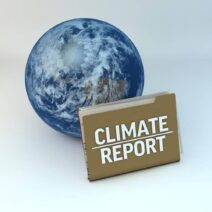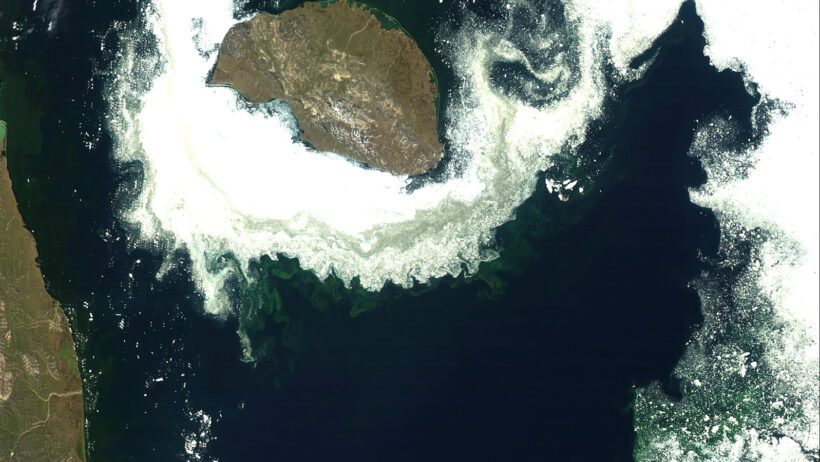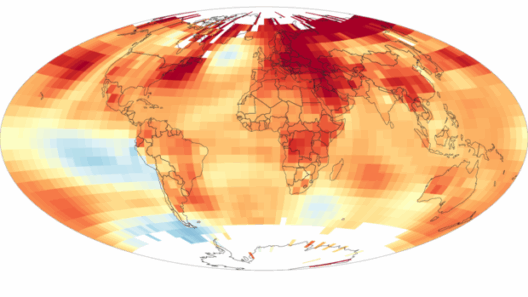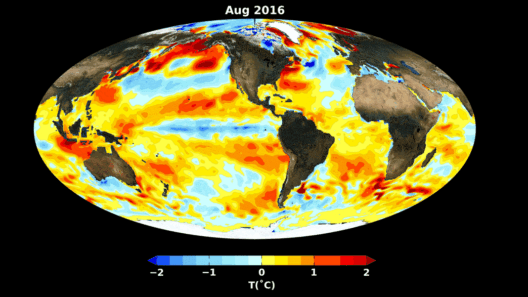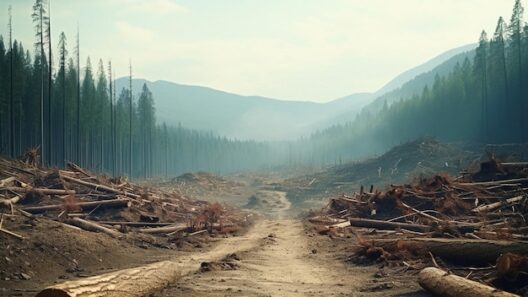As our planet warms, an alarming phenomenon is unfurling: the seasons are becoming unmoored from their traditional timeline. This disarray, a direct consequence of climate change, compels us to reconsider the rhythms of nature that have governed our ecosystems and societies for centuries. The intricate balance between flora, fauna, and human activity is now threatened, leading to a cascade of ecological repercussions that demand our attention and action.
The first indication of this seasonal misalignment comes with spring’s premature arrival. Data from various regions around the globe suggests that warmer winters are nudging the onset of spring forward. Flowering plants are sprouting earlier than ever, bewildering not only pollinators but also the delicate ecosystem that relies on timing. For example, cherry blossoms may burst into bloom weeks ahead of their historical calendar date, while migratory birds may arrive at their breeding grounds too soon, finding scarce resources for nourishment. This disrupts an age-old synchrony within nature’s calendar.
With spring’s inevitable lead, summer is also being co-opted. Heat waves now arrive with alarming regularity, stretching the sweltering season far beyond what is considered normal. In some regions, summer temperatures are soaring, pushing ecosystems to their limits. Fish species in lakes may experience stress due to elevated water temperatures, while terrestrial species seek refuge in shaded areas or migrate to higher altitudes. By shifting the temperature gradient, not only do summers elongate but the vitality of various species hangs precariously in the balance.
Autumn, once a vibrant tapestry of reds and golds, is undergoing a transformation as well. Falling temperatures now linger later into the year, delaying the natural die-off of plants and trees. This inconsistency in seasonal progression leads to prolonged growing periods, allowing certain invasive species to thrive. This uninvited competition threatens local biodiversity, as native species struggle to adapt to the burgeoning presence of aggressive non-natives that flourish in a warmer climate.
Winter, purportedly the season of rest, now exhibits a perplexing contradiction. While some areas face intensified winter storms due to increased moisture in the atmosphere, others grapple with the absence of snow altogether. The fluctuating conditions can wreak havoc on both human infrastructure and natural habitats. Wildlife that depends on snow cover for insulation finds itself vulnerable in excessively warm winters. Furthermore, the timing of freeze and thaw cycles can be detrimental, particularly for aquatic ecosystems. The balance of life in lakes and rivers relies on predictable seasonal transitions.
These shifts in our climate calendar resonate beyond just the environment; they heavily influence agricultural systems as well. Farmers have historically relied on the predictable cadence of the seasons to plant and harvest crops. However, the phenomenon of “season creep,” where planting and harvesting times shift, can have dire consequences for food security. In temperate regions, crops might be sown too early, resulting in frost damage, or harvested prematurely, leading to underdeveloped yields. The impact on food systems is profound, as unpredictable weather patterns challenge the very foundation of modern agriculture.
The interconnectedness of climate change and human health is another critical layer to this issue. Higher temperatures and fluctuating seasons can facilitate the spread of vector-borne diseases. As seasons become less distinct, populations of ticks and mosquitoes expand their range, leading to increased instances of diseases such as Lyme disease and West Nile virus. All the while, our healthcare systems grapple with the ramifications of an ecosystem in chaos, emphasizing the urgent need to recalibrate our understanding of seasonal health risks.
Moreover, cultural practices tied to specific seasons are at risk of eroding. Festivals, holidays, and agricultural customs that have flourished for generations are finding themselves at odds with changing environmental cues. For example, traditional harvest festivals may no longer sync with crop readiness, leading to a cultural disconnect between communities and their environments. The implications of losing these vital connections can reverberate for generations, threatening not just traditional practices, but the very fabric of community identity.
As we unravel the complexities of how global warming is altering our climate calendar, it is crucial to recognize the actions that can mitigate these changes. Transitioning to sustainable agricultural practices can alleviate some pressure on ecosystems, allowing for more robust resilience in the face of unpredictable seasons. Implementing responsible land management strategies can aid in preserving biodiversity and curtailing the advance of invasive species. Furthermore, employing renewable energy allows us to address the root cause of climate change while forging a path toward a sustainable future.
The urgency of our climate crisis necessitates a shift in perspective. We must recognize that adaptation is not merely an option; it is an imperative. By understanding how global warming reshapes our seasons, we can cultivate a deeper appreciation for the intrinsic connections that bind us to our planet. Each season carries its unique set of challenges and opportunities, and it is only by harmonizing our response to these changes that we can hope to foster an equitable coexistence with the natural world.
The question remains: how will we respond to this chaos? The choice lies before us, and it is imperative we act with foresight and intention. Awaken to the fact that our future generations’ rhythms will depend on the actions we take today. The shifting climate calendar demands not just our attention but a resilient commitment to safeguarding our environment. Embracing this responsibility may indeed lead us to a pivotal transformation in our relationship with nature.


